So basically I have some data and I need to find a way to smoothen it out (so that the line produced from it is smooth and not jittery). When plotted out the data right now looks like this: 
and what I want it to look is like this: 
I tried using this numpy method to get the equation of the line, but it did not work for me as the graph repeats (there are multiple readings so the graph rises, saturates, then falls then repeats that multiple times) so there isn't really an equation that can represent that.
I also tried this but it did not work for the same reason as above.
The graph is defined as such:
gx = [] #x is already taken so gx -> graphx
gy = [] #same as above
#Put in data
#Get nice data #[this is what I need help with]
#Plot nice data and original data
plt.xlabel('x')
plt.ylabel('y')
plt.legend()
plt.show()
The method I think would be most applicable to my solution is getting the average of every 2 points and setting that to the value of both points, but this idea doesn't sit right with me - potential values may be lost.
